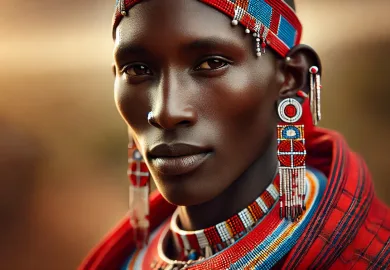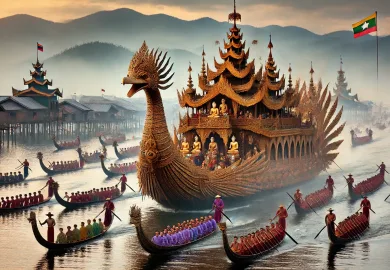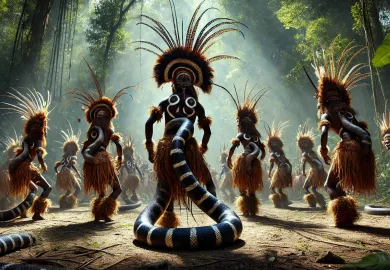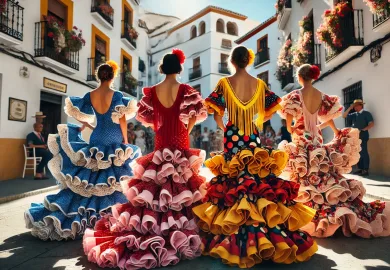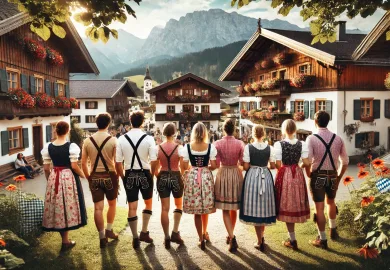
Papua New Guinea, with its lush landscapes and vibrant communities, is home to a fascinating array of ancient traditions and unique rites practiced by its indigenous populations. This island country, often hailed for its cultural diversity, boasts over 800 distinct tribes, each with its own set of traditions, rituals, and beliefs. Exploring these ancient practices offers an insight into a world that has resisted modern influences and preserved its ancestral ways.
The Spirit World: Rituals of the Papuan People
The connection to the spirit world is integral to many tribes in Papua New Guinea. They believe that spirits inhabit all aspects of nature, from rivers and mountains to forests and skies. The natives conduct various ceremonies to communicate and show respect to these spirits, seeking their guidance, protection, and blessings for the tribe.
In one of the most striking examples, the Kekefe Ceremony is conducted by the Sepik River tribes. During this ritual, tribesmen wear intricate masks and body paint, symbolizing the spirits of their ancestors. As they dance, chant, and play traditional instruments, they invite ancestral spirits to join the ceremony, bridging the gap between the living and the spiritual realm.
This deep reverence for nature and the spirits is also evident in initiation rites that mark significant life stages. For instance, boys undergo elaborate rites to transition into adulthood, where they are taught about their tribe’s spiritual beliefs and expected responsibilities.
Tattooing and Body Marking: Symbols of Identity
Body marking, including tattooing and scarification, is a prominent tradition across various tribes in Papua New Guinea. These markings are far more than decorative; they serve as symbols of identity and are deeply embedded in the cultural and spiritual heritage of the natives.
For example, in the Oro Province, women bear facial tattoos that signify their lineage and status within the tribe. The process of tattooing is often painful and lengthy, but the results are celebrated, as they serve as a badge of honor and a sign of beauty. Tattoos can indicate a person’s achievements, family heritage, or even their social rank within the community.
Another form of body marking, practiced by the Crocodile People along the Sepik River, is scarification. This painful ritual involves cutting the skin to create raised scars that resemble crocodile scales, symbolizing a connection to the revered crocodile spirit. The scars are believed to protect and empower the wearer, giving them strength and courage.
Festivals and Feasts: Celebrations of Life and Nature
Papua New Guinea is known for its vibrant festivals and community feasts, where tribes come together to celebrate life, harvests, and ancestral heritage. These gatherings, often marked by elaborate dances, traditional music, and colorful costumes, offer a glimpse into the joyous aspects of indigenous life.
One of the most famous festivals is the Goroka Show, an annual event where numerous tribes gather to showcase their traditional songs, dances, and attire. Each tribe’s unique cultural expression highlights their individual identities while also promoting unity and cultural exchange. During the show, participants wear stunning headdresses made from bird feathers, shells, and plant materials, paying homage to nature and its abundance.
The Yam Festival in the Trobriand Islands is another grand occasion. This festival celebrates the yam harvest, which holds spiritual significance for the natives. As part of the ritual, yams are decorated and displayed in a ceremony that includes dancing, singing, and storytelling. These festivals foster a sense of togetherness and reinforce traditional values within the tribe.
The Art of Storytelling: Passing Down Wisdom
Storytelling is an essential aspect of the cultural fabric of Papua New Guinea. For generations, indigenous people have used oral traditions to pass down knowledge, history, and values. Through myths, legends, and tales, the elders educate the younger members about the tribe’s ancestral heritage, societal rules, and relationship with nature.
In many tribes, storytelling sessions are held around fires, creating a sense of communal bonding. Elders narrate tales of mythical beings, creation stories, and accounts of past heroes. These stories not only entertain but also serve to preserve indigenous knowledge and instill pride in tribal identity.
One prominent example is the legend of the Fire People from the Highlands region, who are believed to have harnessed fire to protect their people from rival tribes. This story, passed down over centuries, serves as a metaphor for resilience and ingenuity, values that are esteemed in Papuan society.
Through these various rites and customs, Papua New Guinea’s native tribes maintain a deep and enduring connection to their history, spirituality, and natural surroundings. These traditions, passed down from generation to generation, enrich their lives and safeguard their unique heritage in an ever-evolving world.

